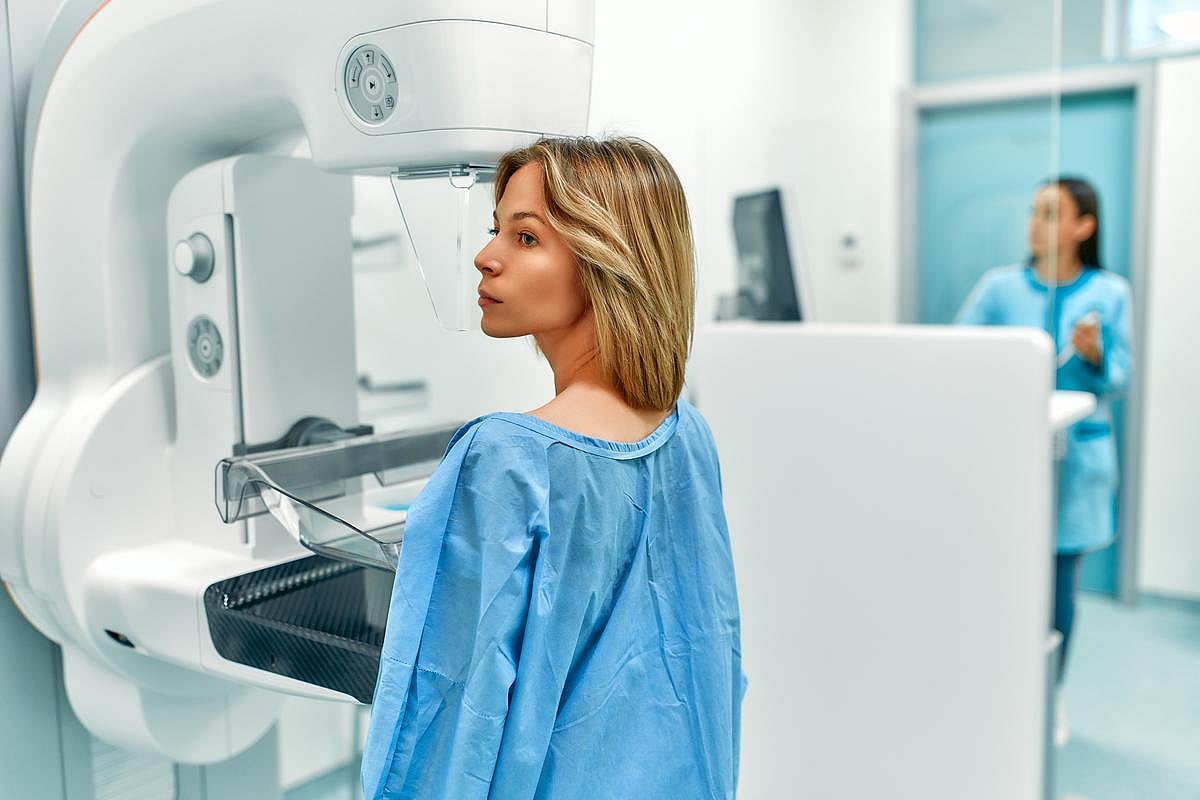Manténgase sano!

- Dennis Thompson
- Posted May 14, 2025
AI Can Catch Hard-To-Detect Breast Cancers In Mammograms
Artificial intelligence (AI) can help prevent breast cancers that develop between routine mammograms, by catching ones that trained radiologists would overlook, a new study says.
Incorporating AI into mammography could help reduce the number of interval breast cancers by 30%, researchers reported recently in the Journal of the National Cancer Institute. Interval breast cancers are ones that develop between routine screenings.
AI could find tumors that are visible on mammograms but missed by radiologists, researchers said. The program also could detect those with faint or subtle signs arguably below the ability of the human eye to detect.
“This finding is important because these interval cancer types could be caught earlier when the cancer is easier to treat,” lead researcher Dr. Tiffany Yu, an assistant professor of radiology at the David Geffen School of Medicine at UCLA, said in a news release.
“For patients, catching cancer early can make all the difference,” she continued. “It can lead to less aggressive treatment and improve the chances of a better outcome.”
For the study, researchers analyzed data from nearly 185,000 mammograms between 2010 and 2019, then focused on 148 cases of interval breast cancer.
The team reviewed the cases of interval breast cancer to figure out why the tumors weren’t spotted earlier, then used a commercially available AI program called Transpara to see if it could detect what radiologists missed.
Results showed that the AI flagged:
76% of mammograms originally read as normal that were later linked to an interval breast cancer.
90% of cases where the cancer had been visible on the mammogram but was overlooked by the radiologist.
89% of cancers with very subtle signs that nonetheless might have been caught.
69% of cancers that were completely invisible on the mammogram.
However, the AI was less effective at identifying true interval cancers that were not present at the time of screening, flagging only about 50% of those, results show.
“While we had some exciting results, we also uncovered a lot of AI inaccuracy and issues that need to be further explored in real-world settings,” senior researcher Dr. Hannah Milch, an assistant professor of radiology at the David Geffen School of Medicine, said in a news release.
“For example, despite being invisible on mammography, the AI tool still flagged 69% of the screening mammograms that had occult cancers,” Milch said. “However, when we looked at the specific areas on the images that the AI marked as suspicious, the AI did not do as good of a job and only marked the actual cancer 22% of the time.”
Larger studies are still needed to figure out how to best use AI in breast cancer screening, researchers said.
While AI isn't perfect and shouldn't be used on its own, Yu said it shows promise.
“It shows potential to serve as a valuable second set of eyes, especially for the types of cancers that are the hardest to catch early," she said. "This is about giving radiologists better tools and giving patients the best chance at catching cancer early, which could lead to more lives saved.”
More information
The American Cancer Society has more on mammograms.
SOURCE: UCLA, news release, May 5, 2025





